
The Syndesmosis Squeeze Test Syndesmosis Injury YouTube
Syndesmosis Squeeze Test | Syndesmosis Injury | Ankle Assessment The syndesmosis is the interosseous membrane that connects the tibia to the fibula. A syndesmosis rupture can result from both inversion trauma and, more importantly, from trauma to the ankle joint in external rotation and dorsiflexion.
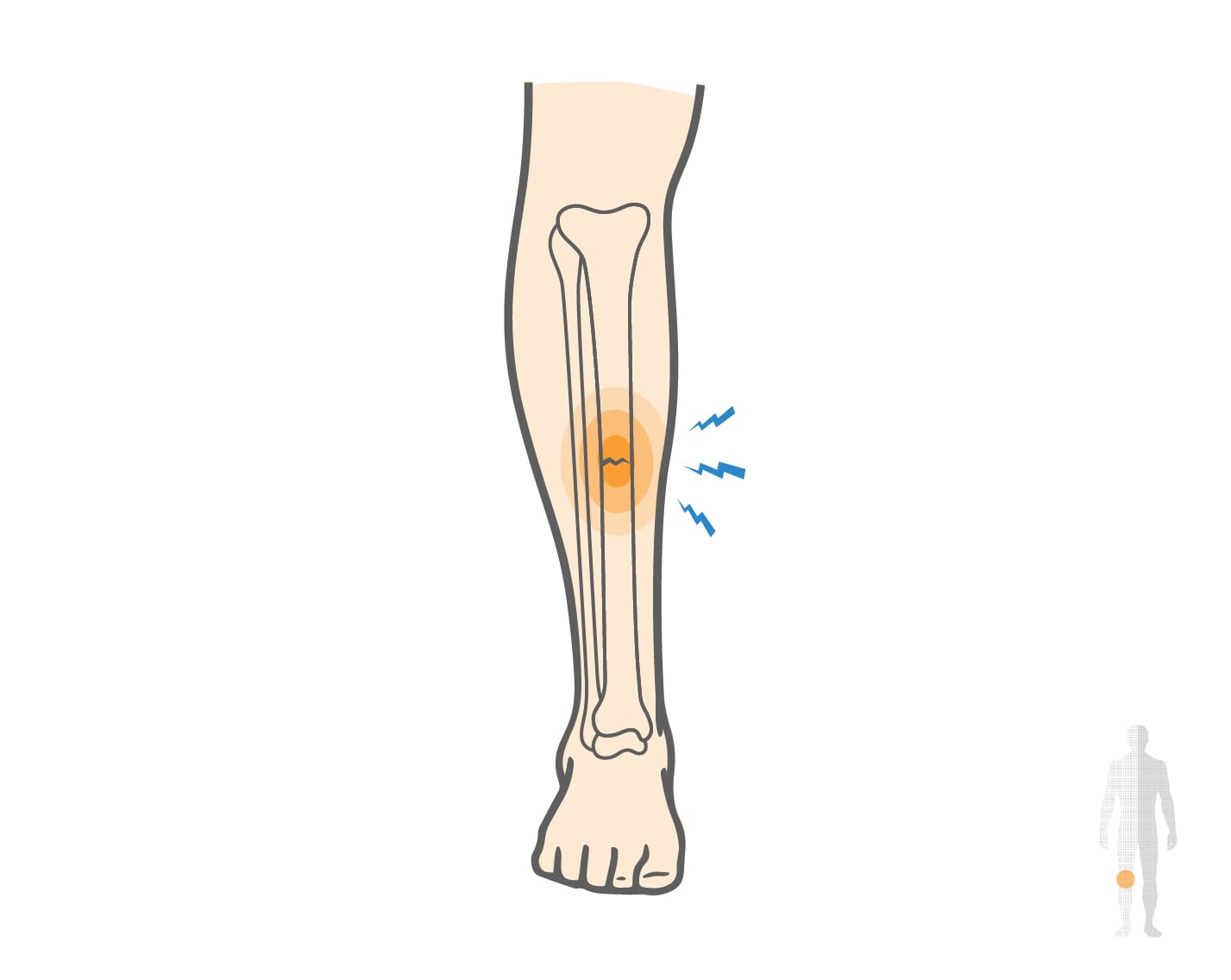
Squeeze test / syndesmosis injury,Stress fracture test / High ankle sprain, 경비인대결합 검사, 경비골 골간막
Of the clinical tests, the squeeze test had the highest specificity (88%) with a positive LR of 2.15 (95% CI 0.86 to 5.39). Syndesmosis ligament tenderness (92%) and the dorsiflexion-external rotation stress test (71%) had the highest sensitivity values and negative LR of 0.28 (95% CI 0.09 to 0.89) and 0.46 (95% CI 0.27 to 0.79), respectively.

Squeeze Test fibula fracture or syndesmosis sprain, tibiofibular sprain/ fibula, positive is
The tibiofibular syndesmosis is a fibrous joint joining the fibula to the tibia and stabilized by four lateral ligaments: the anterior inferior tibiofibular ligament (AITFL), the interosseous ligament (IOL), the transverse ligament (TL), and the posterior inferior tibiofibular ligament (PITFL) (Fig. 1 ).
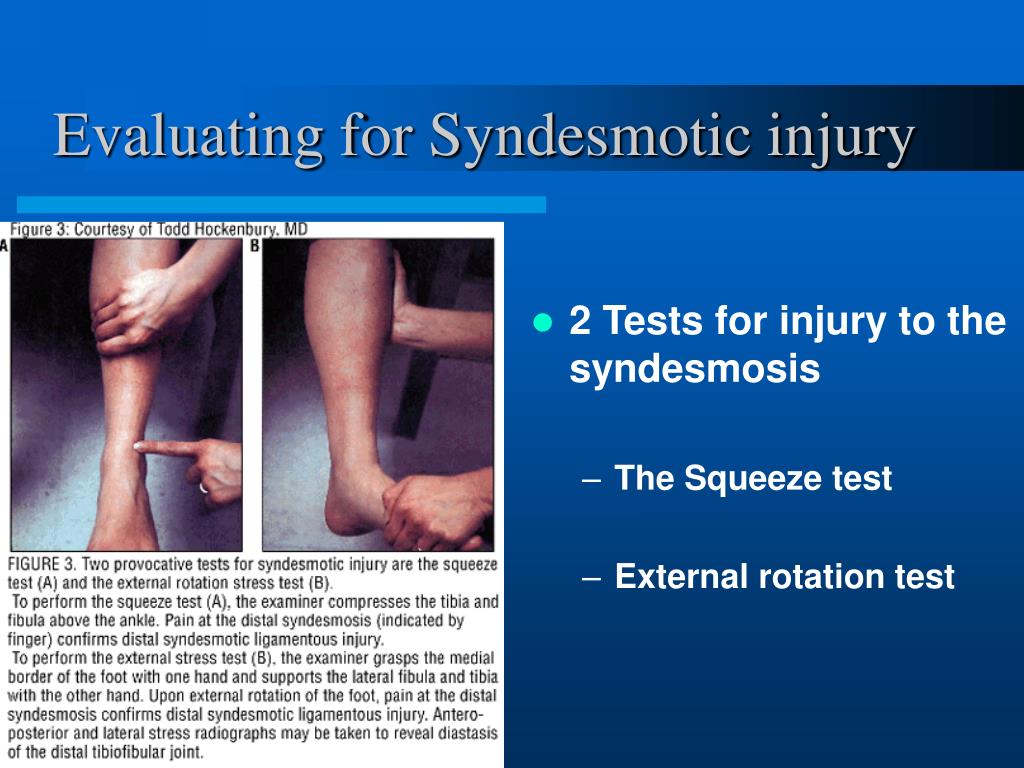
PPT Ankle Anatomy and Exam PowerPoint Presentation, free download ID8486
The "squeeze test" is a clinical test for detecting "stable" syndesmosis injuries. The test is positive when proximal compression of the calf produces pain in the area of the distal tibiofibular and interosseous ligaments. The purpose of this study was to examine what fibular movement, if any, occur.

Squeeze Test YouTube
Diagnosis is suspected clinically with tenderness over the syndesmosis which worsens with squeezing of the tibia and fibula together at the midcalf. Plain stress radiographs of the ankle are required to diagnosis complete syndesmosis injuries with tibiofibular diastasis.

Tibiofibular Compression Test YouTube
The purpose of the squeeze test is to aid in the diagnosis of syndesmotic ankle sprains. The squeeze test is also known as the fibular compression test and available literature suggests that it is used alongside with the ankle external rotation test. [1] Technique
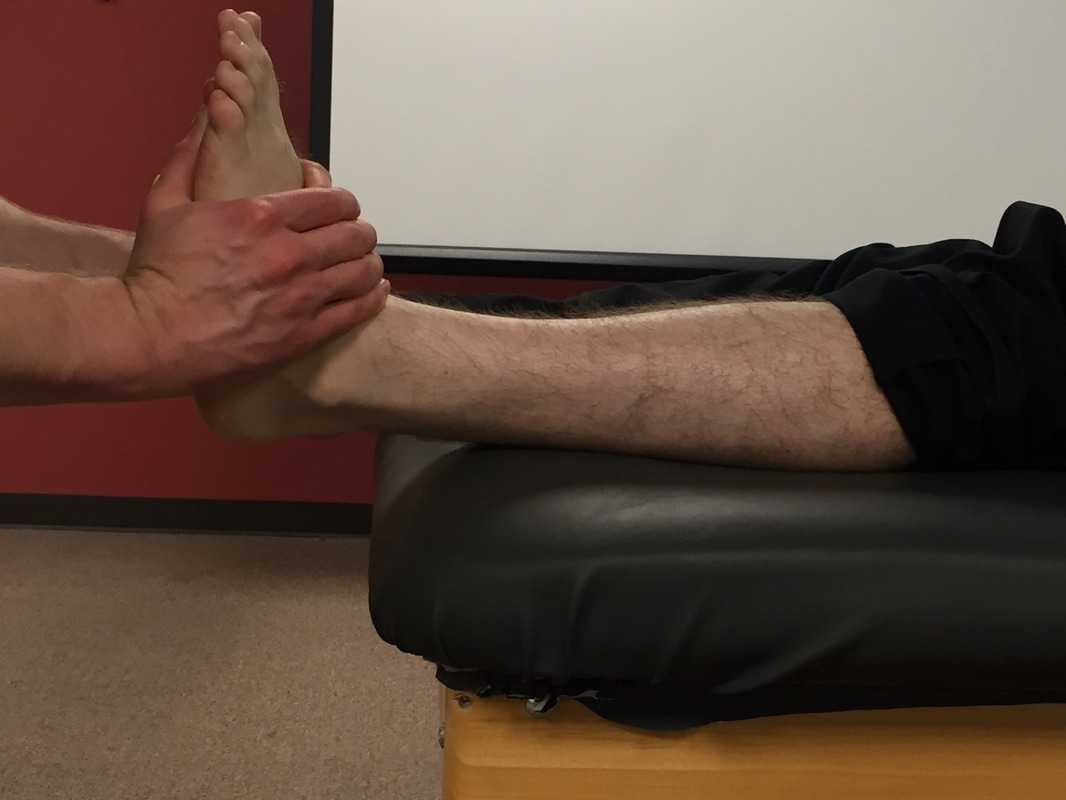
Squeeze Test
A syndesmotic, or 'high' ankle sprain is one that involves the ligaments binding the distal tibia and fibula at the Distal Tibiofibular Syndesmosis. Injuries can occur with any ankle motion, but the most common motions are extreme external rotation or dorsiflexion of the Talus.
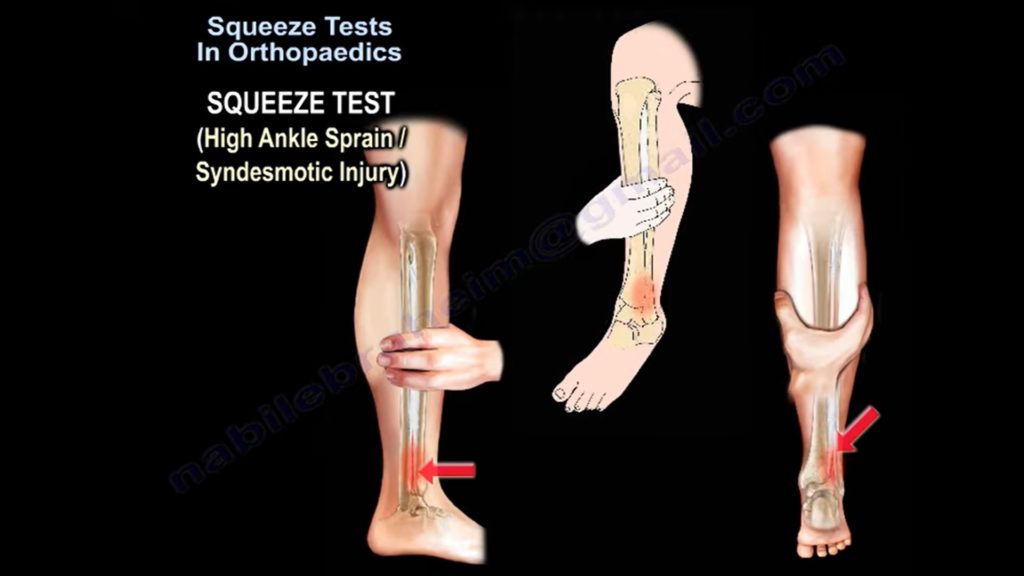
Squeeze Test In Orthopaedics —
Health Library / Diseases & Conditions / High Ankle Sprain High Ankle Sprain A high ankle sprain is also called a syndesmotic injury. This name refers to the syndesmosis, or high ankle ligaments. Your healthcare provider will do certain tests like the syndesmosis squeeze test when diagnosing this sprain.

Ankle Syndesmosis Tests Ankle Syndesmosis Injuries YouTube
Several specific syndesmosis tests have been described. The squeeze test consists of compressing the tibia against the fibula at the mid-point of the calf, thus inducing a movement separating the two bones distally. The test is considered positive when it produces a distal pain around the interosseous ligament.

A New Intraoperative Syndesmosis Instability Classification System Utility and Medium‐term
Squeeze test for syndesmotic injury (high ankle sprain) To perform the squeeze test, place a heel of each hand just proximal to the midpoint of the calf, and compress the tibia and fibula by squeezing in an anteromedial to posterolateral direction.
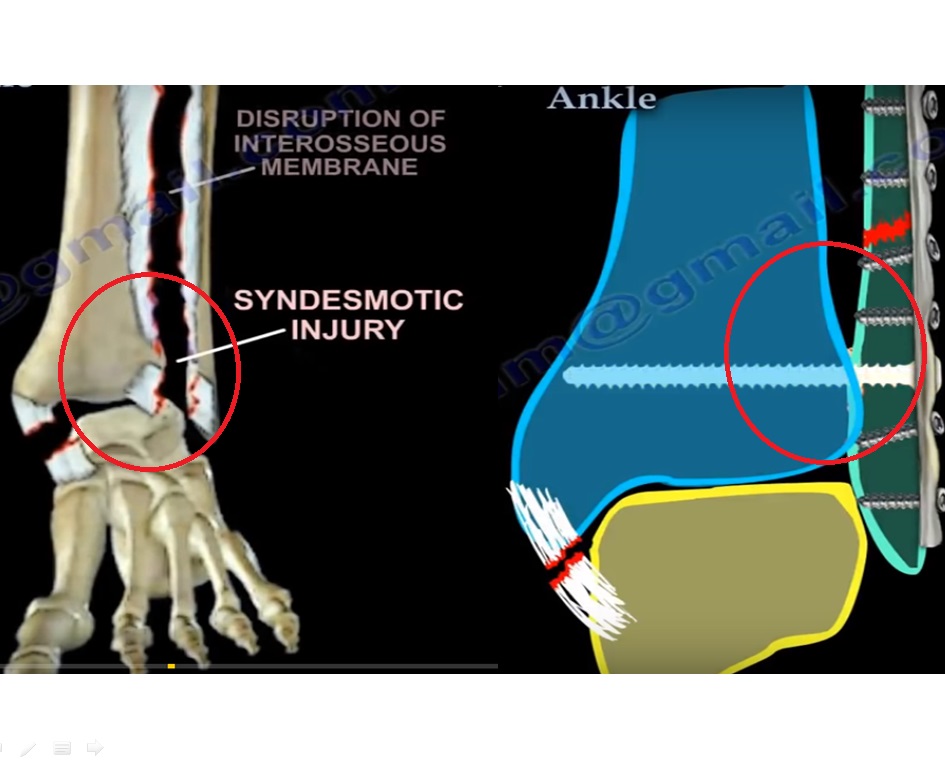
Syndesmotic Injuries to the Ankle —
Palpation, the squeeze test and the external rotation test can all be used to help diagnose an ankle syndesmosis injury.This video clip is part of the FIFA D.

Fibula Translation Test Syndesmosis Sprain Pilates Therapy Education YouTube
The syndesmosis gives stability to the ankle. It resists external rotation and axial and lateral displacement of the talus. Syndesmotic injuries of the ankle can be challenging in the diagnosis and in the treatment. It may not be easy to obtain and maintain reduction of the syndesmosis.
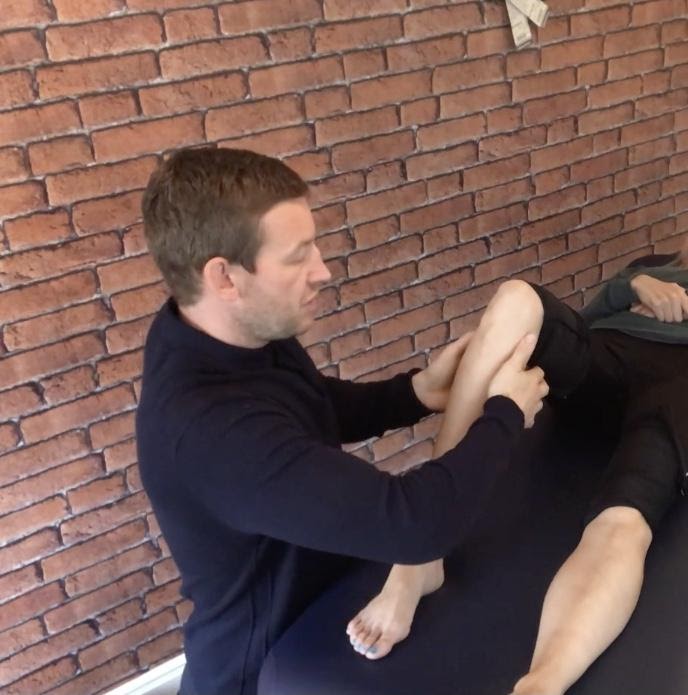
The Ankle Syndesmosis Test You Must Know New Grad Physio
The squeeze test involves mid-calf compression of the tibia and fibula which is thought to cause separation at the distal tibiofibular joint, in turn increasing tension in the remaining syndesmosis ligament fibres resulting in pain at the ankle.27 Biomechanical analysis has confirmed separation at the distal tibiofibular joint when the calf was.

syndesmosis squeeze YouTube
Syndesmosis injuries occur when there is a disruption of the distal attachment of the tibia and fibula. These injuries occur commonly (up to 18% of ankle sprains), and the incidence increases in the setting of athletic activity. Recognition of these injuries is key to preventing long-term morbidity.

Squeeze Test Accès direct cheville YouTube
Purpose: To help identify tibiofibular syndesmotic injuries. Test position: Supine. Performing the Test: The examiner grasps the patient's leg midway up the calf and performs a compress and release motion. A positive test is considered if the patient experiences pain in the area of the syndesmosis. Diagnostic Accuracy: Kappa .75.

Crossed Leg Test Syndesmosis Injury Assessment
The #1 Syndesmosis Test. If you suspect an ankle syndesmosis injury the first test you must do is the squeeze test. In this test you squeeze the top third of the tibia and fibula together and look for a reproduction of pain in the front and/or the back of the ankle joint. When you squeeze together the tibia and fibula at the top of the lower.